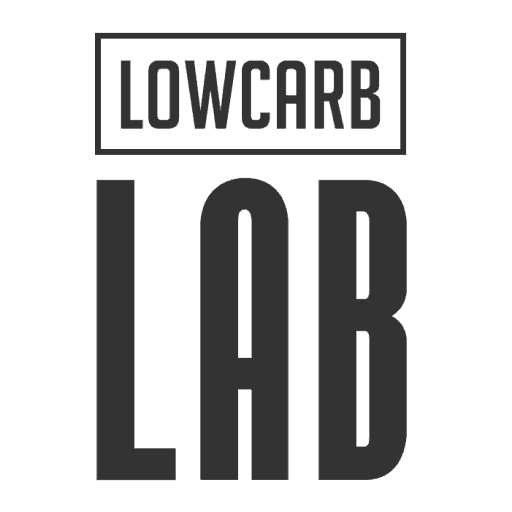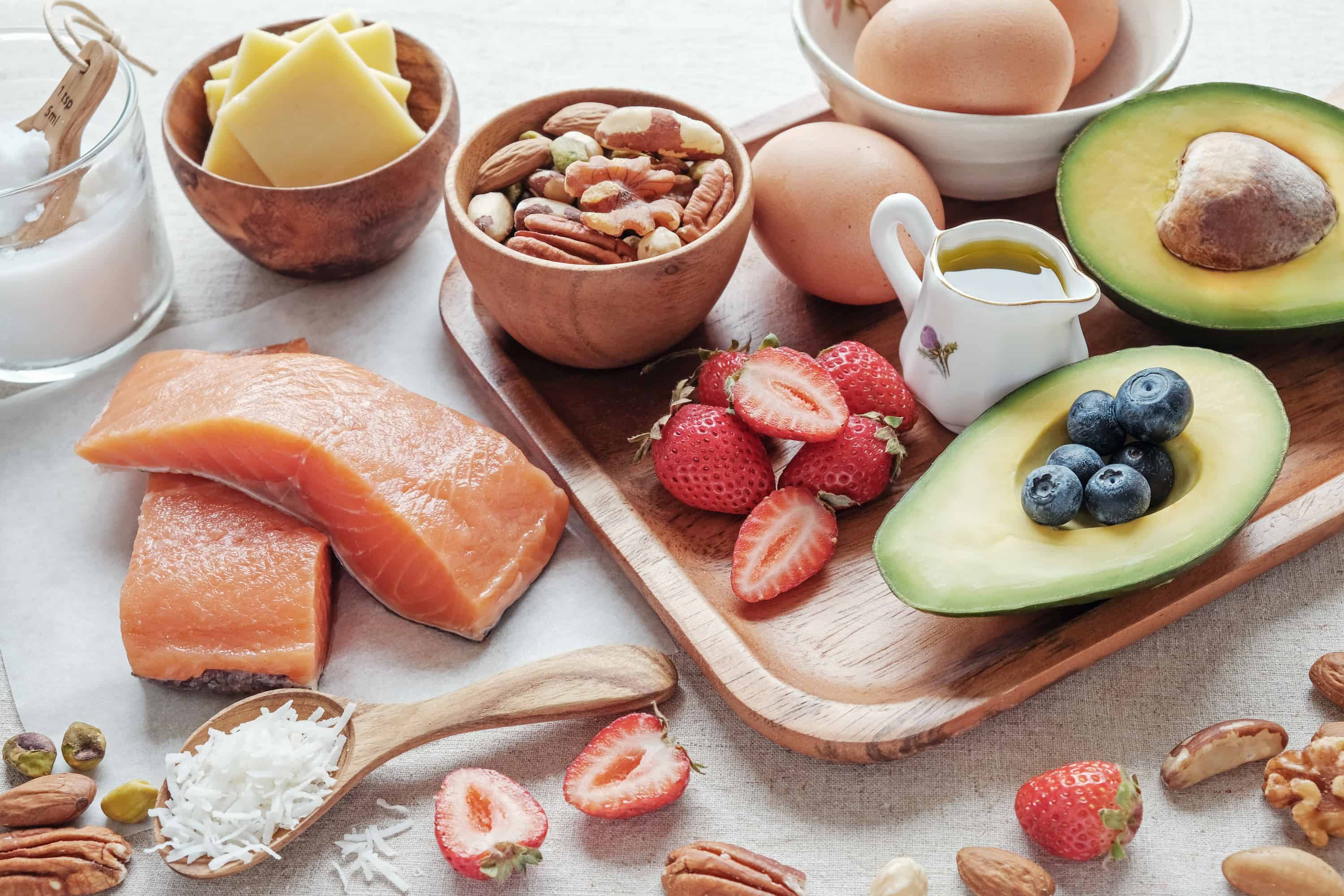Let Food Be Your Medicine
Eating healthy seems like a fad nowadays – everyone is hopping on some kind of diet that omits certain food groups, or only eats at certain times of day using intermittent fasting, or something else even more seemingly extreme. With all the processed food we are exposed to on a daily basis, eating healthy is a pretty difficult proposition if you don’t know what you should be eating.
It’s slowly coming out that processed grains, and in particular the extreme amount of carbohydrate humans eat, is incredibly bad for us. Humans have only been cultivating and growing grains for about 10,000 years, which isn’t enough time for evolution to catch up with that consumption.
This leads to a laundry list of conditions and diseases that can be linked to the eating of grains. Autoimmune diseases are correlated to grain eating, Celiac disease is directly caused by wheat gluten.
Even the widespread malaise from “gluten intolerance” comes from the bread, cereals, and pastas we eat every day. What’s worse, these are the foods that are supposed to form the foundation of our diet.
Nearly every western dietary guidelines indicate that we should be eating a mountain of grain and carbs every day.
Worse than that, it’s suggested we get our recommended daily fruit from things like juice or gummies, which are just straight sugar.
Naturally, overconsumption of sugar is the primary cause of type 2 diabetes, but professionals still suggest that fat is the culprit. Modern science is catching up to the fact that we were sold a lie a long time ago, but the average person is still in the dark.
Luckily, in the past decade or so, two very therapeutic diets have come to the forefront of health circles and mainstream diet consciousness: the ketogenic diet and the paleo diet. Both of these ways of eating eschew processed foods almost entirely, as well as the huge amount of processed sugar in the western diet. Instead, they fill your meals with healthy vegetables, delicious meats, eggs, nuts and seeds, and fish. Paleo doesn’t exclude fruit, and keto allows for small amounts of lower carb berries.
Altogether you have a complete nutrition plan that rejects the horrific mistakes of modern food processing and sugar overconsumption.
Which of these will help you heal yourself and live a longer, happier, healthier life?
We’ve compiled information on both here, with some tips, tricks, and lesser-known information that should help you make an informed decision and take your health back!
What is the ketogenic diet?
The ketogenic diet has been used to treat childhood epilepsy for over 100 years. Children with epilepsy respond very well to the ketones that the ketogenic diet creates, and the kids being treated with the diet show no ill effects, often continuing it into adulthood.
Based on a hundred years of case studies, and thousands of patients, it can be concluded that for the majority of people, keto is safe.
Related: Ketogenic diet food pyramid
How does it work?
Most of the time, humans have no shortage of sugar in their diets. When a person eats carbs or sugar, the body converts it into usable blood sugar, called glucose. This elevates your insulin, which either shuttles the glucose to your cells that need energy, converts it to glycogen and stores it in the muscles and liver. If your cells don’t need energy at that time, or your body has stored as much glycogen as it can, insulin triggers your body to convert the glucose to fat and store it in fat cells.
This is, of course, an unwanted side effect of what is a really efficient system.
When you overeat sugar, however (and this can happen even if you’re a very active, fit person) your cells start to ignore the insulin in a condition called “insulin resistance”.
When your cells start to ignore the insulin, the insulin has no choice but to store the glucose as fat, because circulating blood sugar is damaging to our organs and cells. As insulin sensitivity gets worse, eventually your body really stops responding to the insulin and blood sugar spikes tremendously after eating. This condition is called type 2 diabetes, and is one of the leading causes of hospitalization and death in the United States, as it contributes almost entirely to most heart attacks and strokes.
Keto works by drastically restricting carbohydrate intake. Once carb intake is sufficiently low, your body is prompted to utilize the glycogen that it has stored in your muscles and liver and converts it to usable glucose. Most people have enough stored glycogen to utilize a glucose metabolism for about 24-48 hours. After that, your metabolism shifts to using fat for fuel, a state called ketosis.
Once in ketosis, your body can get energy from free-floating fatty acids, or by breaking down triglycerides into ketones. These ketones provide energy to the body, and some organs like the heart and brain actually function better on a ketone metabolism. It’s this property that makes people feel more focused and have better mental clarity when in ketosis or when fasting. A ketogenic diet is highly beneficial because ketones are great brain fuel!
How to enter ketosis
Most people go in and out of ketosis without ever knowing. If you stop eating at night and go to sleep, and then sleep for 8 hours, it’s possible you entered some level of ketosis, just by virtue of not eating. Someone who runs a marathon would also enter ketosis, because they’re almost certainly burning through their blood glucose and stored glycogen. There are several ways a person can enter ketosis:
- Calorie restriction. If you’ve ever been sick for a few days and just not been hungry, you were in ketosis
- Prolonged athletics or exercise will trigger ketosis
- Cutting carbs down to 20-50 grams of carbohydrate a day will put you into ketosis after a day or two
- The brain itself needs 100 grams of glucose a day for various functions. Though your body can convert some protein to glucose to satisfy this need, any diet under 100g of carbs will eventually be ketogenic for this reason
- A combination of exercise and caloric restriction – as most people do when they want to lose weight – will trigger ketosis and burn fat
So first off, don’t be concerned if people tell you ketosis is evil and will kill your kidneys; it’s not true! It’s worth mentioning that type 1 diabetics may have to be concerned with a condition called diabetic ketoacidosis, but it’s something really only type 1 diabetics need to be worried about, and it’s rare if they’re following their protocols.
So let’s start by restricting your carbs to around 20 grams a day. What can you eat? Well, luckily there’s plenty of food you can eat while still keeping your carb intake low. For instance, you can have a delicious ham and cheese omelet for breakfast, a big salad with cheese and meat for lunch, and a steak with broccoli for dinner.
Keto and paleo diet foods:
Vegetables:
- Salad greens like lettuce, arugala, watercress, endive, spinach, and kale
- Greens like chard, turnip, collard, and mustard
- Radishes
- Green beans
- Broccoli
- Cauliflower
- Asparagus
- Brussels sprouts
- Cabbage
- Celery
- Olives
- Peppers
- Artichokes
- Zucchini and summer squashes
- Cucumber
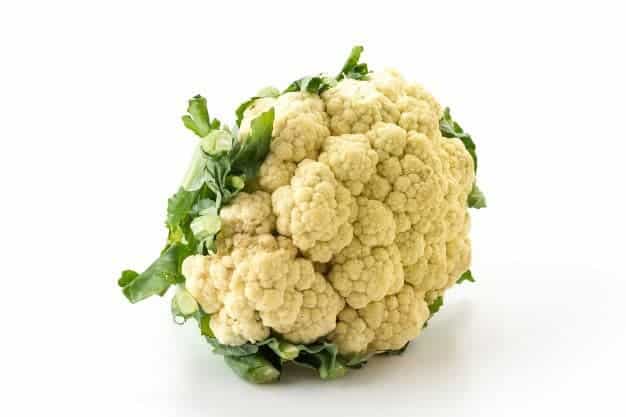
In addition, you can enjoy tomatoes, butternut and spaghetti squash, and onions in moderation, as they’re a bit higher in carbs. It’s also worth mentioning that the list above is hardly exhaustive – there’s tons more. You want non-starchy vegetables, the more colorful the better. Unfortunately, this means no potatoes or corn, not even sweet potatoes (and certainly not sweet corn)!
For meat, you can eat anything that tastes good – as long as it’s not processed, protein is pretty straightforward:
- Beef – all cuts, including offal meats like liver, tongue, etc.
- Pork, again anything, but you should try to avoid sausages and sugar-cured bacon
- Chicken is great to eat, but opt for non-factory-farmed birds. Spend a bit more and get free range, farm-raised chickens. The taste and health benefits are huge
- Lamb, goat, and mutton
- Game meats like deer, elk, and wild boar
- Bison
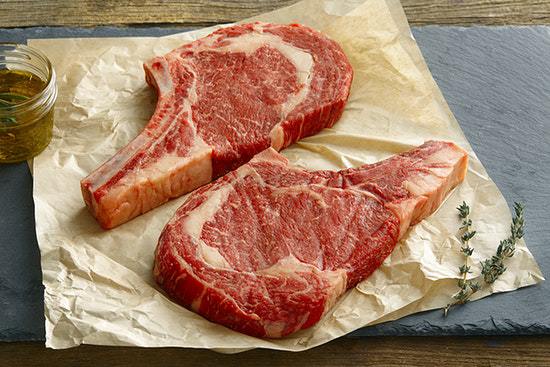
Avoid processed meats like canned or cured meats as much as possible. If you can find deli slices that aren’t cured with sugar, those are fine, too. If you can, get as locally farmed as possible, as factory farms create horrific living conditions for animals. Not only is it cruel, but because it creates a biological hazard, the animals are pumped full of steroids to grow quick and antibiotics so they don’t die. Both of these things impact the people who eat these animals.
Seafood:
- Salmon – wild caught
- Sardines, bristling, and other tiny ocean fish
- Lobster, crab, and crayfish, but with crayfish, make sure they’re American caught
- Tuna, catfish, and other fatty fish
- Trophy fish like swordfish or marlin are good, but not very sustainable. These fish also get big, and accumulate more mercury than smaller fish, so they should be eaten in extreme moderation
- Clams, oysters, and mussels
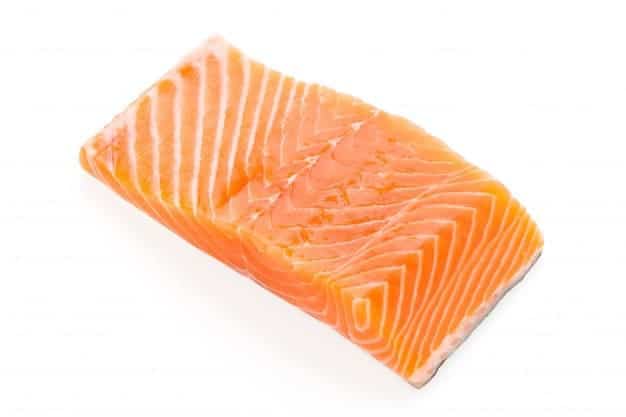
Opt for wild-caught fish, don’t get farmed fish at all if you can help it, and go for the most sustainable choice. In particular, avoid tilapia, as it’s often raised overseas in farms that are not unlike the factory farms raising chickens in the US.
Everything else:
- Tree nuts like almonds, walnuts, pecans, pistachios, and Brazil nuts
- Macadamia nuts are amazing on keto
- Coconut, sunflower seeds, pumpkin and squash seeds
- Healthy fats like coconut oil, olive oil, palm oil, ghee, lard, tallow, bacon grease, and butter
- Natural sweeteners like monk fruit or stevia
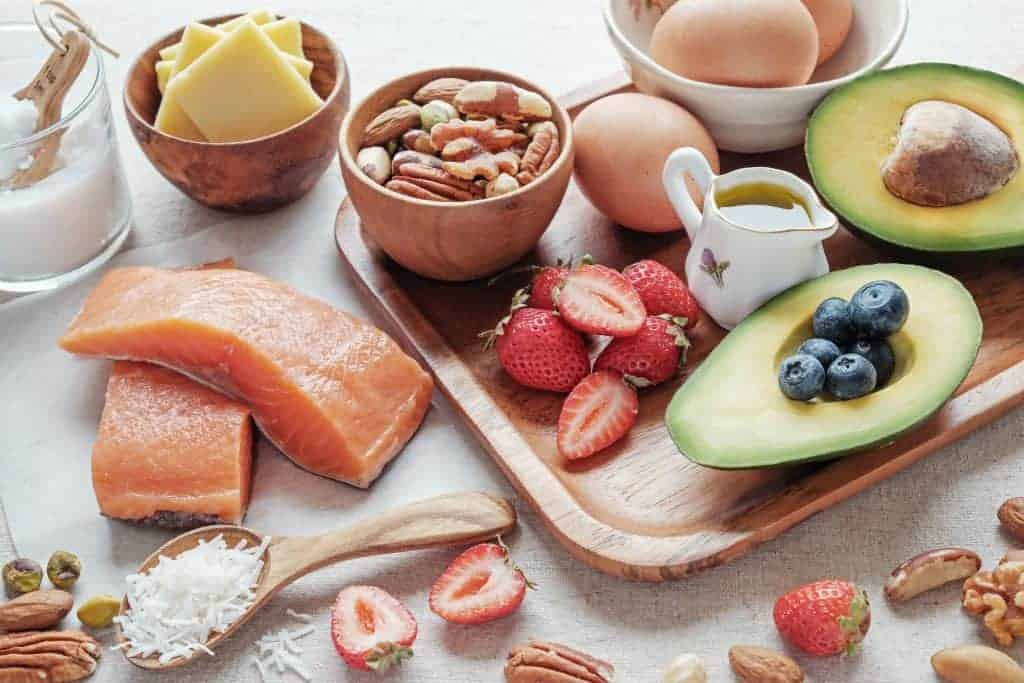
Fermented foods like kimchi and sauerkraut are both fantastic on keto or paleo, and both are great at improving your gut microbiome. Eat them when you can!
Peanuts and peanut butter can be eaten in moderation, but it can be carby. Same with cashews, though they should be avoided for the first month or so on keto, as they’re VERY carb-heavy.
What to expect
Keto can create a metabolic system that helps reduce bodily inflammation, eases bloating and water retention, causes near effortless weight loss and improves cardiac conditions like high A1C or blood pressure. It also reduces insulin sensitivity, improves type 2 diabetes, makes type 1 diabetes more manageable, and has a profound effect on mental health disorders.
Most people lose between 10-15 pounds in the first 2 weeks.
Don’t let this magical number fool you, though, because at least half of that will be water weight. This is because glycogen is stored with water in the muscles and liver. Once you’ve used it, you’ll need to dump all the extra water, but don’t fret; you’ve still lost a good amount of fat that week, and each week after as long as you’re following the diet.
What is the paleo diet?
Paleo is a catch-all term for a handful of similar diets (primal, ancestral, etc) that revolve around eating the way our Paleolithic ancestors ate. They followed herds of animals, eating meat when they could, but mostly their diets were nuts, berries, roots, and protein. The theory is that those peoples had robust health and only died to violence or pathogens – they didn’t suffer the rates of heart disease or cancer we do today. In fact, most people consider heart disease, cancer, and diabetes to be “lifestyle diseases”, or ones that we cause ourselves mostly.
Related: Best paleo beef recipes
Paleo is like keto in that it bans almost all forms of processed foods, but it differs in that it allows for fruits, honey, and agave nectar as sweeteners. Even with those in the diet, however, the amount of carbs most people take in on the paleo diet is still significantly less than the Standard American Diet, and therefore Paleo will still often trigger ketosis. The acceptable foods list above is spot on for both keto and Paleo, but of course, you can add more unprocessed, natural sugars if you’re doing Paleo.
What to expect
For some people, Paleo is simply easier to follow, allowing for more variety and flavors (and more sweetness). Weight loss will be slower than strict keto, but it might be easier to adhere to in the long run, so permanent weight loss might simply be easier to maintain with Paleo. Like keto, though, cutting out all the extra sugar and processed foods leads to improvements in bio markers across the board, including blood cholesterol (LDL), blood pressure, A1C, insulin response, and fasted blood sugar.
Paleo vs keto
What’s the main difference between the two? Well, honestly it comes down to sugar. You can follow a paleo diet, eating only in-season fruits and vegetables and locally sourced meats, and still be in ketosis. This means they’re not mutually exclusive and can work in tandem to get you to a healthy spot in life. If you find yourself wanting apples and almond butter, or a banana after a workout, then Paleo might be more your speed. If you want to lose weight super fast and really suppress your appetite, keto would be the way to go.
Keto vs Atkins
Dr. Atkins’ New Diet Revolution is a great book with a very no-nonsense approach to low carb eating, and many people have followed it with great success. The main difference between keto and Atkins is that keto avoids processed foods and is focused on a more whole-foods approach in general. Atkins is more concerned with the bottom line of low carb intake. Keto also focuses more on fat, whereas again, Atkins is fine as long as the carbs are low. Both are valid and work great.
Keto vs Whole 30
The biggest difference between these two is that Whole 30 allows for grains and natural sugars. Keto eschews those entirely, and while Whole 30 works for a lot of people, it might not work for those who have extreme insulin resistance or type 2 diabetes, and in those cases, keto is preferable.
Paleo vs Whole 30
These are very similar, allowing for a wide range of whole foods, but again, Whole 30 allows for potatoes, corn, and grains, things that are to be completely avoided on Paleo. Whole 30 also still approaches nutrition from the “fat isn’t great” standpoint, which is based on bad, old science.
The takeaway
At the end of the day, there are a lot of diets and many of them have merit. The ketogenic diet and the Paleo diet are intended to be lifestyles. Once you’ve gone down those paths and you understand what sugar and grains can do to your body, it’s difficult to want to go back to eating them, or to feeding them to your family. It’s not really a matter of Paleo vs keto, but rather finding a way of eating that works for you while removing unhealthy, processed, and sugary foods from your diet once and for all. This will get you back on track to good health and wellbeing!
